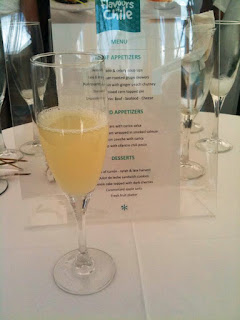"Honk!"
"Oka-dee!"
No, those aren't new sound effects for comics that feature waterfowl as superheroes. Although they could be, I guess...(Darkwing Duck, move over!)
Those are the sounds that constantly surround you when you visit the George C. Reifel Migratory Bird Sanctuary just outside Ladner, B.C. Just take a half-hour's drive from the Vancouver International Airport, and you'll find yourself in a wetland paradise full of ducks, geese, cranes, and herons - not to mention songbirds like red-winged blackbirds or raptors like bald eagles or marsh hawks (a.k.a. northern harriers).
 |
| Bald eagle soars over our heads. |
I will say that although it is a stopping place for birds migrating north and south in the spring and fall, respectively - an avian "motel" of sorts - it is also a year-round home for many other birds.
Reifel is one of those rare spots you can visit again and again, and never tire of going there. It's a special place where you can get close to nature without having to drive too far from your front step, if you live in the Greater Vancouver area. The experiences there are pretty much the same every time, but for me, there's always one gem of an experience I have that's a bit different each time, something that sets that visit apart from others.
For example, when I was there last Monday, I saw a great blue heron fly across a pond and alight on a log right in front of me. It then proceeded to spend several minutes grooming itself while I shot videos and images of the bird.
Another time, I was able to watch and record a pair of sandhill cranes strolling along the edge of the marsh. You won't see these large, rare and beautiful birds every time you go to Reifel, but I have seen them on more than one occasion.
Of course, you'll never lack company if you take the time to spend a few toonies and purchase the bags of seed ($1 each) they sell at the admission gate for people to feed the ducks and geese in the sanctuary. (That's the only food people are allowed to feed them, so be forewarned). Be prepared for a stampede, though - if you start sprinkling too close to where you're sitting or standing, you'll quickly be swamped by ducks (no pun intended, but if it works, hey...).
A quick word of caution: remember, these are wild animals - they're not pets, nor is this a zoo, so if you do go and you do feed them, keep that in mind, also.
 |
| Great blue heron gets ready to groom. |
As I sit there on a bench, emptying the last few bits of seed from my paper bag, I look out at the various marshes and ponds, separated by the earthen dikes that form the trail system within the sanctuary and wistfully wish I could hop in a canoe and go paddling through the area's waterways.
So as much as I'd love to hear the sound of a paddle dipping into Reifel's waters, I guess I'll just have to settle for walking the trails and hearing the sounds of "Quack-Honk-Oka-dee!"





